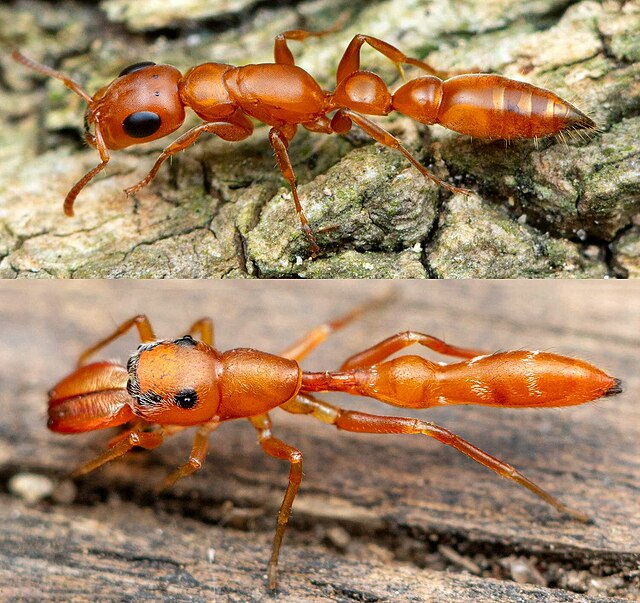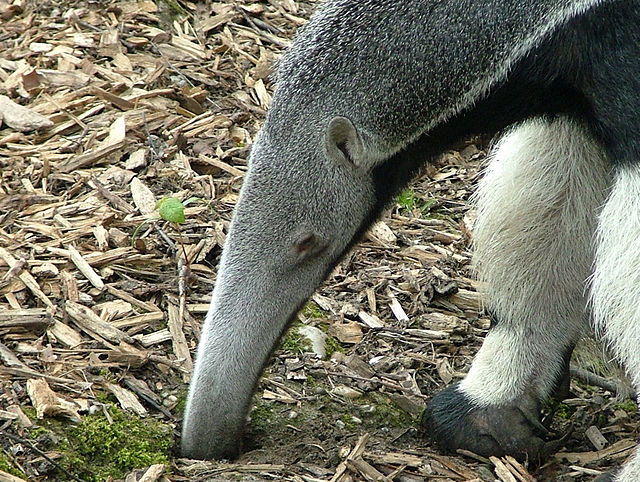Ant mimicry or myrmecomorphy is mimicry of ants by other organisms; it has evolved over 70 times. Ants are abundant all over the world, and potential predators that rely on vision to identify their prey, such as birds and wasps, normally avoid them, because they are either unpalatable or aggressive. Some arthropods mimic ants to escape predation, while some predators of ants, especially spiders, mimic them anatomically and behaviourally in aggressive mimicry. Ant mimicry has existed almost as long as ants themselves; the earliest ant mimics in the fossil record appear in the mid-Cretaceous alongside the earliest ants.
Top: An ant in Mozambique Bottom: An ant-mimicking spider, Myrmarachne
Thick waist of the Mirid ant bug, Myrmecoris gracilis is camouflaged with white markings.
Diolenius phrynoides
Sarinda hentzi
Myrmecophagy is a feeding behavior defined by the consumption of termites or ants, particularly as pertaining to those animal species whose diets are largely or exclusively composed of said insect types. Literally, myrmecophagy means "ant-eating" rather than "termite eating". The two habits often overlap, as both of these eusocial insect types often live in large, densely populated nests requiring similar adaptations in the animal species that exploit them.
The snout and the scientific name of the giant anteater (Myrmecophaga tridactyla) reflect its feeding habits.
Juvenile Iberian green woodpecker eating ants
Myrmarachne spider eating a queen ant. The spider mimics the ant (Wasmannian mimicry) both to avoid predators (Batesian mimicry) and to deceive its ant prey (aggressive mimicry).







